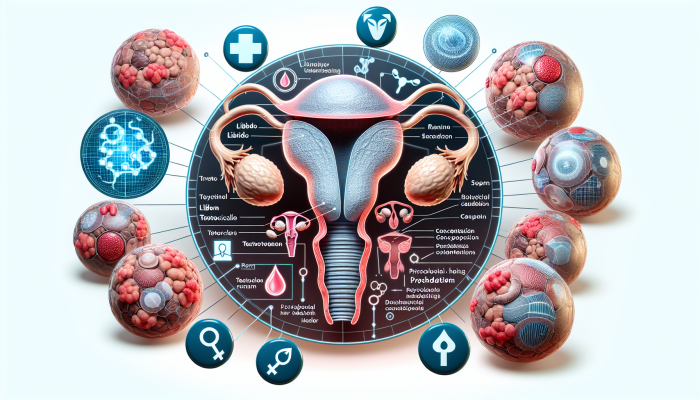Comprehensive Guide to Testosterone Testing Standards for Optimal Health Enhancement
Testosterone is a fundamental element of hormonal well-being that is essential for both men and women. This steroid hormone plays a pivotal role in fostering muscle growth, boosting sexual desire, sustaining bone density, and maintaining emotional balance. Achieving the ideal balance of testosterone levels can significantly enhance various aspects of life, including energy levels, mood stability, and cognitive function. Therefore, gaining insight into testosterone testing standards is vital for detecting hormonal discrepancies and enhancing overall health.
Understanding the Crucial Role of Testosterone in Comprehensive Health

In men, testosterone is predominantly synthesized in the testicles, whereas women produce it in smaller amounts through the ovaries. This hormone, often associated with male traits like muscle mass and body hair, is equally crucial for numerous bodily functions in women. Fluctuations in testosterone levels can greatly affect libido, sperm production, and mental clarity. Low testosterone levels can result in various health issues, including depression, chronic fatigue, and diminished sexual performance.
Additionally, testosterone significantly influences mental well-being. Research indicates that maintaining optimal testosterone levels can lead to improved mood and enhanced stress resilience. This underscores the importance of regularly monitoring and understanding your testosterone levels, especially if you experience shifts in emotional or psychological health.
How Testosterone Testing Standards Are Developed: Key Insights
Testosterone testing standards are established through extensive clinical studies involving healthy individuals. These research efforts account for various factors such as age, sex, and timing of the tests. Naturally, testosterone levels exhibit daily variability, often peaking in the morning. Consequently, laboratories adjust their benchmarks to reflect these natural fluctuations.
It’s essential to recognize that reference ranges can differ between laboratories, primarily due to variations in testing methods and the demographics of the populations involved in the studies. Therefore, what one laboratory considers “normal” may differ from another's standards. This disparity emphasizes the importance of consulting with a healthcare professional to accurately interpret your results, taking into account your individual health profile.
Key Elements Influencing Variations in Testosterone Testing Standards Across Labs
Variations in testosterone testing standards among different laboratories arise from several factors. Each laboratory employs specific testing techniques that can differ in accuracy and sensitivity. For example, some labs may use immunoassays, while others might utilize more advanced methods like liquid chromatography. Such differences can lead to varying test results.
Moreover, the reference populations selected to establish these norms can significantly impact the resulting values. If a laboratory primarily tests individuals from a specific age group or ethnic background, its established norms may not accurately represent the general population. Therefore, obtaining results from a reputable laboratory and discussing them with a healthcare professional is critical for understanding your results considering your medical history.
Decoding Your Testosterone Testing Results: Key Considerations

Interpreting the results of a testosterone test may initially seem overwhelming; however, it becomes easier once you grasp the established standards and their significance. Typically, testosterone results are expressed in nanograms per deciliter (ng/dL), with variations influenced by factors such as age and sex.
Your Step-by-Step Guide to Understanding Testosterone Test Results
The first step in evaluating your testosterone test results is to compare them against the testosterone testing standards. Generally, testosterone levels in men typically range from 300 to 1,000 ng/dL, while women’s levels usually fall between 15 to 70 ng/dL. If your results are outside these established ranges, further investigation may be necessary to uncover potential underlying causes.
It’s important to remember that test results should be evaluated within the context of your overall health. What may be considered low testosterone levels for one individual could be entirely normal for another, depending on factors such as age and overall health. Consulting with a healthcare professional can help you assess your results in light of your complete health profile and determine whether further testing or interventions are necessary.
Understanding the Consequences of Low Testosterone Levels
Clinically referred to as hypogonadism, low testosterone levels can lead to a range of significant health issues. Common symptoms include a marked reduction in libido, persistent fatigue, decreased muscle mass, and emotional fluctuations. If you are experiencing any of these symptoms, it is advisable to consider undergoing a testosterone test to determine whether your levels are below the normal range.
The causes of low testosterone can be varied, encompassing medical conditions as well as lifestyle factors. Conditions such as diabetes, obesity, and disorders impacting the pituitary gland can hinder testosterone production. Additionally, environmental factors, including exposure to harmful chemicals or endocrine disruptors, may also contribute. A thorough medical evaluation is essential for accurately pinpointing the cause and determining the most effective treatment strategies.
The Health Risks Associated with High Testosterone Levels

On the flip side, excessively high testosterone levels can also pose health risks. Abnormally elevated testosterone levels may be associated with medical conditions such as testicular tumors or the misuse of anabolic steroids. Symptoms linked to high testosterone can include acne flare-ups, hypertension, and mood disturbances, including increased aggression.
It is vital not to jump to conclusions based solely on elevated results. Engaging in a discussion with a healthcare professional is necessary to thoroughly assess the findings and explore further testing to uncover the underlying factors. It is equally important to discuss the potential health risks associated with high testosterone levels, which may include cardiovascular issues and other adverse health effects.
Key Factors Influencing Testosterone Levels: Insights for Enhanced Health
Testosterone levels are dynamic and can be influenced by numerous factors. Understanding these influences empowers you to make informed decisions about your hormonal health.
The Role of Age in Shaping Testosterone Levels
Age is a crucial factor impacting testosterone testing standards. Research shows that testosterone levels in men typically begin to gradually decline around the age of 30. Although this decrease is usually slow, it can have profound implications for both physical and mental health over time.
Women, despite generally having lower testosterone levels, also experience a decline as they age, particularly following menopause. This reduction can result in symptoms such as fatigue, reduced libido, and emotional fluctuations. Therefore, it is essential for individuals of all genders to monitor their testosterone levels as they age and seek medical advice if any signs of hypogonadism emerge.
The Influence of Lifestyle Choices on Testosterone Levels
Your lifestyle choices profoundly affect the maintenance of optimal testosterone levels. Engaging in healthy habits, such as consuming a balanced diet, exercising regularly, and ensuring adequate sleep, can significantly bolster optimal hormonal levels. Research indicates that physical activity, especially strength training, can stimulate testosterone production.
Conversely, risk factors such as obesity, a sedentary lifestyle, and chronic stress can disrupt hormonal balance. Elevated stress, particularly, can raise cortisol levels, a hormone that negatively affects testosterone production. By implementing stress-relief techniques such as meditation or yoga and adopting an active lifestyle, you can greatly enhance your hormonal health.
The Impact of Medications and Supplements on Testosterone Levels
Certain medications can significantly influence testosterone levels. For instance, corticosteroids, opioids, and specific antidepressants may lead to decreased testosterone production. If you are taking medication and have concerns about your testosterone levels, it is advisable to discuss this with your healthcare provider.
On the other hand, some supplements marketed for boosting testosterone levels, such as zinc and vitamin D, may offer benefits, especially for individuals with nutritional deficiencies. However, it is crucial to consult a healthcare professional before starting any supplementation. A balanced approach that emphasizes a nutritious diet and an active lifestyle is typically the most effective strategy for maintaining optimal hormonal levels.
Recognizing Symptoms and Diagnostic Techniques for Abnormal Testosterone Levels
Identifying the symptoms associated with abnormal testosterone levels is essential for early detection and timely intervention. This process generally involves physical examinations and laboratory tests.
Common Symptoms of Low Testosterone Levels to Watch For
Symptoms associated with low testosterone levels can vary from person to person, but several common signs may indicate a hormonal imbalance. Persistent fatigue is often reported as one of the most significant symptoms. If you notice a drop in your energy levels that seems out of proportion to other factors, it could be a warning sign.
A decrease in libido is another critical indicator. Men may encounter difficulties achieving or maintaining an erection, while women might experience a decline in sexual interest. Moreover, loss of muscle mass, weight gain, and emotional changes such as anxiety or depression can also be linked to low testosterone levels.
When to Consult a Healthcare Professional for Testosterone Testing
If you are experiencing ongoing symptoms or have specific concerns about your testosterone levels, it is advisable to consult with a healthcare professional. Early evaluation can be crucial for identifying potential underlying health conditions and developing an appropriate action plan.
For men over 40 or women experiencing menopause, discussing testosterone testing with a physician may be particularly prudent, even in the absence of symptoms. Regular screenings can help monitor your testosterone levels and facilitate informed health decisions.
The Diagnostic Process for Evaluating Testosterone Levels
The diagnostic approach for assessing testosterone levels typically begins with a medical consultation, during which your symptoms and medical history are thoroughly reviewed. If your doctor suspects a hormonal imbalance, they may recommend a blood test to measure your testosterone levels.
Testing usually occurs in the morning when testosterone levels are at their highest. Should abnormal results be detected, further testing may be required to determine the underlying cause. This could include assessments of pituitary function or additional hormonal evaluations. Accurate diagnosis is crucial for formulating an effective treatment plan.
Therapeutic Strategies for Addressing Abnormal Testosterone Levels
Upon discovering abnormal testosterone levels, a range of treatment options may be available. The selection of the most appropriate treatment often depends on the underlying cause and individual preferences.
Effective Approaches for Managing Low Testosterone Levels
Management of low testosterone levels may involve testosterone replacement therapy (TRT), which aims to restore normal hormonal levels. TRT can be delivered through various methods, including injections, gels, or transdermal patches. This treatment can effectively alleviate symptoms associated with hypogonadism, such as fatigue, decreased libido, and loss of muscle health.
However, it is essential to discuss the potential risks and benefits of TRT with your healthcare provider. While many patients experience symptom relief, there are associated risks, including cardiovascular complications and possible side effects. Regular monitoring of hormonal levels is often necessary to ensure the treatment's safety and effectiveness.
Natural Approaches to Elevating Testosterone Levels
For individuals who prefer to avoid hormonal treatments, several natural methods can assist in increasing testosterone levels. Maintaining a healthy lifestyle characterized by a balanced, nutrient-rich diet is vital. Foods rich in zinc, vitamin D, and omega-3 fatty acids can boost testosterone production.
Incorporating physical activity, particularly resistance training, is another excellent method for stimulating testosterone production. Furthermore, engaging in stress management practices such as meditation, yoga, or enjoyable recreational activities can help lower cortisol levels, thereby supporting optimal hormonal balance.
Evaluating the Pros and Cons of Testosterone Replacement Therapy
Testosterone replacement therapy can provide numerous advantages, including improved libido, enhanced mood, and increased muscle mass. However, it also comes with potential risks, including an increased risk of cardiovascular disease, sleep apnea, and prostate complications.
Thus, carefully weighing the benefits and risks of TRT is essential. A comprehensive discussion with a healthcare professional is crucial in determining whether this treatment aligns with your health objectives. Regular follow-up appointments are also necessary to monitor treatment effects and adjust therapy as needed.
The Profound Impact of Testosterone Levels on Overall Health
Testosterone levels exert a significant influence on various aspects of health, including mental well-being, bone density, and cardiovascular health. Understanding these connections can assist you in managing your overall health more effectively.
How Testosterone Levels Contribute to Mental Health
Research suggests that testosterone levels can significantly affect mental well-being. Low testosterone levels are frequently associated with mood disorders such as depression and anxiety. Individuals with adequate testosterone levels often demonstrate better emotional resilience and an enhanced quality of life.
Importantly, addressing hypogonadism may also yield positive mental health outcomes. Many patients report improvements in mood and reductions in depressive symptoms following the restoration of normal hormonal levels. This highlights the significance of monitoring testosterone levels, particularly in the context of mental health challenges.
The Critical Role of Testosterone in Promoting Bone Health
Testosterone is essential for supporting bone health, contributing to bone density and reducing the likelihood of osteoporosis. Adequate testosterone levels are crucial for maintaining bone mass and lowering fracture risk, particularly in older adults, as declining testosterone levels can lead to increased bone fragility.
Studies indicate that testosterone replacement therapy may also positively affect bone density in both men and women experiencing hypogonadism. Therefore, monitoring testosterone levels and considering suitable treatment options is vital for sustaining optimal bone health.
The Connection Between Testosterone Levels and Cardiovascular Health
The relationship between testosterone levels and cardiovascular health is intricate. Balanced testosterone levels can support heart health by influencing lipid metabolism and promoting vascular function. However, excessively high testosterone levels, often associated with steroid use, may elevate the risk of cardiovascular diseases.
Achieving a healthy hormonal balance is essential. Regular monitoring of your testosterone levels and consultations with a healthcare professional will aid you in navigating these health issues and maintaining optimal cardiovascular health.
Proactive Monitoring and Assessment of Testosterone Levels: Essential Guidelines
Taking the initiative to prepare for a testosterone test and monitor your testosterone levels is crucial for sustaining optimal hormonal health. Here are several recommendations to assist you throughout this process.
Essential Preparation Guidelines for a Testosterone Test
Proper preparation for a testosterone test is vital for ensuring accurate results. It is advisable to avoid intense physical activity, alcohol consumption, and certain medications, including corticosteroids, at least 24 hours before the test. Typically, tests are conducted in the morning when testosterone levels are naturally elevated, yielding more reliable outcomes.
Discussing any questions or concerns with your physician prior to the test is equally important. Adequate preparation can significantly influence the accuracy of your results and enhance your overall understanding of your hormonal health.
Determining the Optimal Frequency for Testosterone Testing
The frequency of testosterone testing is often dictated by symptoms and medical recommendations. For men over 40, annual testing may be advisable, particularly if there are concerns regarding low testosterone levels. For individuals undergoing treatment or exhibiting symptoms, more frequent testing may be necessary to monitor testosterone levels and adjust treatment plans as needed.
Maintaining open communication with your healthcare provider is essential in establishing a testing frequency that aligns with your unique health needs.
The Importance of Ongoing Monitoring of Testosterone Levels
Consistent monitoring of testosterone levels allows for the assessment of treatment efficacy and the identification of shifts in your hormonal health. This is especially critical for those receiving testosterone replacement therapy, as treatment adjustments may be necessary over time.
By diligently tracking your testosterone levels, you can collaborate closely with your healthcare provider to optimize treatment and ensure a healthy hormonal balance. This proactive approach can enhance your overall health and help prevent potential health complications in the future.
Common Questions About Testosterone Testing Standards
Do testosterone levels fluctuate during the day?
Yes, testosterone levels naturally fluctuate throughout the day, typically peaking in the morning hours.
What symptoms indicate low testosterone levels?
Common symptoms include persistent fatigue, decreased libido, mood changes, and loss of muscle mass.
How do testosterone levels impact mental health?
Low testosterone levels can contribute to mental health disorders, including depression and anxiety.
When should I consult a healthcare provider for testosterone testing?
Consult a physician if you experience ongoing symptoms or have concerns regarding your testosterone levels.
What treatment options are available for low testosterone levels?
Options include testosterone replacement therapy, lifestyle modifications, and natural remedies.
Is testosterone replacement therapy a safe option?
While beneficial for many, testosterone replacement therapy carries potential risks, including cardiovascular complications.
Can supplements help boost testosterone levels?
Some supplements may be beneficial, but consulting a healthcare professional before using them is essential.
What is the normal testosterone range for men?
Normal testosterone levels in men typically range from 300 to 1,000 ng/dL.
Should women consider testosterone testing?
Yes, women can also benefit from testosterone testing, especially if they exhibit signs of hormonal imbalance.
What is the recommended frequency for testosterone testing?
The frequency of testing depends on symptoms and medical history; however, annual testing may be advisable for men over 40.
Connect with us on Facebook!
This article was originally published on https://bloodtest.co.uk
The Article: Testosterone Testing Standards: Your Ultimate Guide appeared first on: https://ezbloodtest.com
The Article Testosterone Testing Standards: Essential Guide for You Was Found On https://limitsofstrategy.com


I really appreciate how you emphasized the importance of testosterone for both men and women. It’s interesting to see how overlooked this hormone can be, especially in women, despite its essential role in mood and energy levels. Personally, I’ve noticed a significant difference in my well-being after getting my levels checked—it was eye-opening to see how much a hormonal imbalance can affect daily life.
It’s great to hear from someone who’s been on a personal journey with testosterone. It’s like discovering a secret ingredient in a recipe you thought you already had nailed down. You think you’ve got everything under control, and then bam—shows up lurking in the corners of your health like an uninvited party guest.
You nailed that metaphor about testosterone being a secret ingredient. It really does have a way of sneaking up on you, even when you think you have everything figured out. My own journey with it has been eye-opening, to say the least. I found myself reflecting on how much our understanding of health is constantly evolving, almost like we’re trying to perfect a recipe that has countless variations.
Your insight about testosterone really hits home. It can be like an unexpected twist in a story you thought you knew well. Our journey with health isn’t just about finding one perfect solution; it’s more like experimenting in the kitchen to see what flavors come together.
“Absolutely, it’s fascinating how our health journey can feel like a recipe in progress! If you’re interested, I’ve shared some insights that might add a few more ingredients to your understanding of testosterone.”
https://chandelierjackson.com/VideoLeap
It’s interesting how much we can learn from our own experiences, isn’t it? Your reflection on testosterone feels so personal, like a secret we all grapple with in different ways. It’s a fascinating hormone—its role seems to flicker in and out of focus in our conversations about health, often showing up just when we least expect it.
You’ve nailed it—the way we engage with our own experiences shapes how we understand hormones like testosterone. It’s almost like this quiet undercurrent in our lives, influencing more than just physical aspects. It feels personal because it often intertwines with our self-image, confidence, and even relationships. When we talk about health, we dive into all sorts of details, yet testosterone sometimes slips into the background until it suddenly demands attention.
It’s great to hear that you’ve noticed such a positive change after getting your testosterone levels checked. Many people don’t realize how vital this hormone is for overall well-being until they experience the effects of an imbalance firsthand. Your experience highlights a common yet often overlooked aspect of health—how hormones, including testosterone, can influence mood and energy.
It’s interesting how often we overlook the role hormones play in our daily lives, isn’t it? Your point about the importance of testosterone is so valid, especially considering how many people wait until they hit a wall before they realize something’s off. When I started feeling a noticeable drop in my mood and energy, I almost chalked it up to just getting older or being busy—all those adulting responsibilities tend to take a toll, right? But getting my testosterone levels checked was a game changer for me.
It’s interesting to hear you say that, and you’re completely right about how often the role of hormones gets overlooked. Before diving into my own experience, I really didn’t give much thought to testosterone or how it might be affecting me. It was only after I started feeling unusually fatigued and found my mood swinging unexpectedly that I even considered getting my levels checked.
It’s great to hear your experience with testosterone and how it impacted your well-being. Many people don’t realize how crucial this hormone is for women too. It often gets overshadowed by other hormones, but it plays a big part in our overall mood and energy.
I’m glad to hear that your experience with checking your testosterone levels has been so enlightening! If you’re interested in exploring more about hormonal health and ways to keep your balance in check, check out this resource for some valuable insights.
https://chandelierjackson.com/ParentAler
It’s great to hear how your experience with testosterone levels has impacted your well-being. You’re right; many people don’t realize just how crucial this hormone is, especially for women. It can influence everything from mood to energy levels, and yet it often takes a backseat in discussions about health.
You’ve brought up an important point about the role of testosterone, especially for women. It’s fascinating how this hormone is often overlooked in health conversations. Many people tend to associate testosterone solely with men and muscle mass, but its influence goes so much deeper.
What a fascinating dive into the world of testosterone testing! You know, it’s interesting how often testosterone gets a bad rap, often overshadowed by its more notorious cousin, estrogen. They both play such critical roles, yet the focus seems to lean heavily towards testosterone, especially in the realm of fitness and masculinity.
You bring up a really intriguing point about the narratives surrounding testosterone and estrogen. It feels like testosterone often gets this hyper-focused lens, particularly in fitness discussions, where it’s almost portrayed as the backbone of masculinity. But, as you mentioned, estrogen is equally important, influencing not just reproductive health, but also mood, bone density, and even fat distribution.
You’ve hit on something important. The focus on testosterone often overshadows how essential estrogen is for both men and women. It’s fascinating how society anchors definitions of masculinity and femininity to these hormones, overlooking estrogen’s role in mood and cognitive function. It contributes to emotional balance, which is crucial for overall well-being, yet it often doesn’t get the recognition it deserves.
Absolutely, it’s fascinating how both hormones play vital roles in our overall health. If you’re interested in exploring more about the balance of testosterone and estrogen and their impact on fitness and well-being, check out this insightful resource!
https://chandelierjackson.com/emailoctopus
You nailed it. It’s fascinating how testosterone tends to steal the spotlight in fitness chatter and broader discussions about masculinity. You hear so much about it driving aggression, muscle mass, and even competitiveness. It’s like this cultural shorthand for what it means to be a “man”. But when you step back and look at the bigger picture, estrogen often gets left behind, even though it plays a huge role in so many aspects of health and wellbeing.
“Absolutely! It’s fascinating how these hormones interplay in our overall health. If you’re curious to dive deeper into this topic, check out this insightful resource that explores the balance between testosterone and estrogen in more detail!”
https://chandelierjackson.com/FaceTune
You bring up an excellent point about testosterone and estrogen. It’s fascinating how testosterone often steals the spotlight, especially in discussions around fitness and masculinity. While it’s often seen as the defining hormone for strength and aggression, estrogen plays a significant role in health, mood, and even muscle function.
“Absolutely, the balance between testosterone and estrogen is crucial! If you’re curious to learn more about how to optimize both hormones for better health, check out this insightful resource.”
https://chandelierjackson.com/ChocolateHealth
You’re spot on about the dynamics of testosterone and estrogen. It’s interesting how culturally we’ve often centered on testosterone when discussing strength and masculinity, while estrogen remains somewhat in the shadows, even though it has such a broad impact on overall health. Balancing both is indeed vital, not just for physical performance but also for mental well-being and mood stability.
You bring up a great point about estrogen often being sidelined in these conversations. It’s fascinating how we’ve built this narrative around testosterone, framing it as the sole driver of strength and masculinity. But when you dig deeper, estrogen plays such a crucial role in everything from mood to muscle recovery. So many people overlook how it affects not just physical health but mental resilience as well.
“Absolutely! If you’re curious about the nuanced roles these hormones play in our lives, check out this resource for deeper insights.”
https://chandelierjackson.com/emailoctopus
You’ve touched on a really important point. Testosterone definitely seems to grab the spotlight more often than estrogen, particularly in discussions about fitness and masculinity. It’s fascinating how culture paints these hormones in such stark contrast.
You’ve touched on a really important point. Testosterone definitely seems to grab the spotlight more often than estrogen, particularly in discussions about fitness and masculinity. It’s fascinating how culture paints these hormones in such stark contrast.
You raise a solid point about the disproportionate focus on testosterone compared to estrogen. It’s curious how society often promotes certain narratives about masculinity while neglecting the equally important roles women’s hormones play in health and well-being. Both hormones are more interconnected than we realize; for instance, testosterone isn’t just a male hormone, and estrogen supports both men and women in different ways.
I’m glad you found the article intriguing! If you’re interested in exploring more about the balance between testosterone and estrogen in fitness and health, check out this resource I found helpful.
https://chandelierjackson.com/ChocolateHealth
You bring up a really important point about testosterone and how it’s often painted in a more controversial light compared to estrogen. It’s true that testosterone tends to dominate the conversation, especially in fitness and masculinity discussions, while estrogen plays such a vital role too. The contrasting spotlight on the two hormones is curious, especially given how essential both are for well-being, regardless of gender.
“Absolutely, it’s intriguing how both hormones shape our health and well-being. If you’re curious to explore more about the balance between testosterone and estrogen, check out this insightful resource!”
https://chandelierjackson.com/ChocolateHealth
Your exploration of testosterone’s multifaceted role in health underscores its importance across both genders, which is often overlooked in discussions centered predominantly around male health. It’s fascinating how testosterone influences not only physical strength and libido but also emotional and cognitive functions.
You’re hitting the nail on the head! It’s like testosterone is this unsung hero in the health saga—up there flexing its muscles for both men and women. You’re right; we often focus on physical strength and libido, but when it comes to emotions and brainpower, testosterone deserves a gold star.
Thank you for your thoughtful insights! If you’re interested in diving deeper into the intricate role of testosterone in both men and women, I invite you to explore this resource for a more comprehensive understanding.
https://chandelierjackson.com/eComToolkit